Glengarry Glenn Ross As Thrilling As A Basque Ball Game
Saturday, November 22, 2008
For a child, parents’ warning is like a rose blooming in the brain; it opens with difficulty and fades quickly.
Galileo Galilei, Berchtolt Brecht
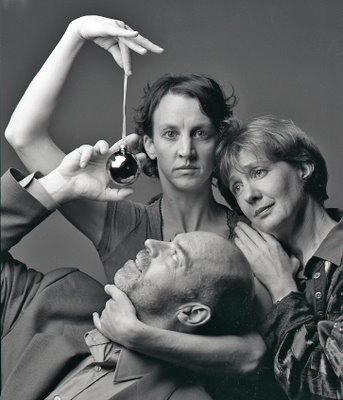
Last night John Lekich and I went to see the Main Street Production of David Mamet's play Glengarry Glen Ross at the Little Mountain Studio on East 26 Avenue at Main Street. The experience was so intense that when we had a coffee at the nearby coffee shop, The Grind I was just about commanded by Lekich,"You must blog this." My retort, "I only have a picture of actor Bill Dow that I took some years ago in a trio with Lois Anderson (centre) and Sheelah Megill (right). Lekich looked at me and said, "So what?"
The intensity of this production, besides a stellar cast including my fave Bill Dow playing Shelley "The Machine" Levene, was because we the audience weren't watching a play on a stage. We were in the stage watching the performance about a meter or two away from the actors. In the second act the chairs are re-configured and the audience surrounds an office situation. The swearing, the yelling the slamming of doors, all up front, made me forget I was watching a play. I was watching a real life drama involving men with questionable ethics or perhaps with no ethics.
I told Lekich that my first play (I forget the circumstances and obviously my parents gave me no choice on going or not going) was Bertolt Brecht's Galileo Galilei performed in Spanish in a Buenos Aires theatre-in-the-round configuration sometime in 1952 when I was 10. I will never forget the immediacy of seeing people talking there in front of me when my previous experience came only from movies. There was that visceral feeling all over again at last night's Glengarry Glen Ross.
Around 1960 when I was officially an adult in Mexico City (I was 18) I was able to go to the Frontón Mexico (minors were not allowed because the frontón is a betting game) to see mostly Basque pelotaris play the super exciting juego de pelota (ball game) or frontón. I remember in particular a player called Chicuri and the sole Mexican who liked Chicuri was considered a fenómeno (great player). The Mexican was a short and very quick man called Rafael Solana whose other talent of Formula 1 racing finally killed him. The form of frontón that I liked so much is usually called jai alai in North America. Jai alai in euskera (the language of the Basques) means "the happy game".
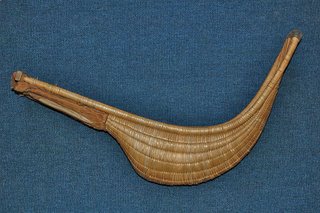
It is played with a basket called zesta-punta. This is supposed to be the fastest game in the world as the pelota (ball, handmade of virgin rubber, layered with nylon thread and two goatskin covers. Slightly smaller than a baseball and livelier than a golf ball, the pelota weighs about 4½ ounces.) has been clocked at over 300kph and can shatter bulletproof glass.
Watching my favourite pelotaris play the game was a thrill that has rareley been equalled. I get ráfagas (a lovely Spanish word that means flash or streak) of this thrill when I listen to solos by Marc Destrubé or a rose super-performs in my garden, the bloom drawing my attention with its perfection of shape and scent. I had several ráfagas of this thrill watching the virtuoso performance of the all-male cast last night of Glengarry Glenn Ross and in particular that of Bill Daw and of Alex Ferguson playing Richard (Ricky) Roma. The latter could be an inspirational speaker at a $500 a plate dinner. He was that convincing and smooth. Bill Daw with the simple movement of his semi-closed eyes or the raising of an eybrow was triumphant one instant and defeated in the next. Watching Dow was like watching Chicuri or Solana gather the ball with their cesta and hurling it at the frontón (wall) with that dizzying speed that thrilled me so many years ago.
If I didn't get 100% satisfaction at the play it had all to do with the fact that I don't work from nine to five from Monday to Friday. If this were the case, after a frustrating hard week of the office, Glengary Glenn Ross, much like Sam Peckinpah's Straw Dogs, is the perfect play to see on a Friday night. It was funny too. We were sitting next to Vancouver Sun theatre reviewer Peter Birnie. The three of us seemed to laugh in unison. What fun to have fun!
Twilight - As Childhood Ends
Friday, November 21, 2008
When I scanned this panoramic slide last night for my history of photography class at Van Arts today (the class was about landscape photography) it almost broke my heart. Here you see Rebecca taking pictures of a flock of flamingos in a lagoon in Yucatán. That's Rosemary on the left. The sky is so blue and Rebecca so slim and girlish. The world was at her feet.
Rebecca (11) has been crying these days as she maneuvers into adulthood in what could be a highly shortened teenagehood. Many in school shun her. I am sure it has all to do with her perceived sophistication. Math isn't all that easy and taking care of her guinea pig Pablo is not the pleasure she thought it would be before she received him as gift. Life is hard.
If there is anything I am completely helpless about, it is in dealing with crying women. I will do anything (within my power) to make a crying woman stop. So I called Rebecca's mother and told her to ask Rebecca if she would want to go with me tomorrow afternoon to see Twilight. I wasn't there to see her expression but I am sure Rebecca smiled. Even if the film is a dud satisfaction has already come this way. I look forward to my date tomorrow.
San Miguel Allende, The Cessna Citation & I Fall For An Ex Ballerina
Thursday, November 20, 2008
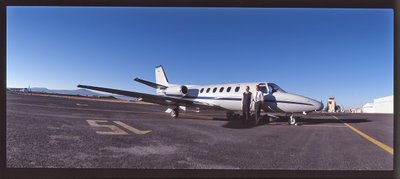 It is hard to believe that only 10 years ago a magazine (Nuvo) sent both Sean Rossiter and I to do a story in San Miguel Allende, Mexico. The story hinged around a BC aviation pioneer called Bob Engle. It was Engle (here with his wife Roxy) who provided us access to his Cessna Citation which flew us from Vancouver to Querétaro, Mexico where we were then driven to San Miguel. 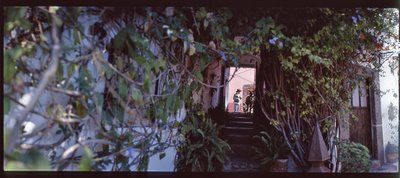 In San Miguel we stayed with the Engles and we had as a visitor their landlord who happened to be ex Olympic skater Toller Cranston who now was a well-known painter in the San Miguel De Allende artist community. Here you see him in his large and beautiful studio.  While there I never stopped thinking at the luck I had in having been flown there and being able to share the hospitality of the Engles and enjoy the food, the sun and the smells of Mexico.  One other visitor was Jennifer Hamilton. She was in her 70s. She was a retired ballerina from New York City. I fell for her and became her lap dog. I watched how graceful she was and questioned my senses, after all she was at least 18 years older than I was. I don't think I had ever fallen for an older women before or since. It had to be the dance aspect of her! 
Max Wyman - Smitten Over Dance
Wednesday, November 19, 2008
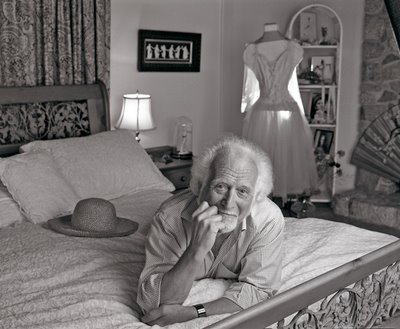 I have written often here about my love for dance. When my daughters were young I took them to every Vancouver appearance of any internationally known dance troupe. I did this because I thought it was my obligation as a father. It has all become a blur and I remember taking them to see the Alvin Ailey Dance Company. I remember black dancers all dressed in luminous white and the women were dancing with parasols. I remember nothing more. But I do remember waiting in my Fiat on cold rainy evenings outside the Vancouver School of Music on Chestnut Street. I would wait and wait while my daughters dithered and chatted with friends as they changed after their ballet classes with Mr. Lee. Mrs. Lee's method was to only pay attention to those girls who she thought had talent. She ignored the rest. My daughters were ignored and to this day I would say they are ambivalent about dance because of their experience there. When I met and saw Evelyn Hart dance in the 90s I fell in love with her and with ballet. I soon became so intrested in the discipline that I went to modern dance and just about anything else (except tap which is where I draw the line). I was so smitten by Evelyn Hart that I went to the library in search of books on her. I found one, Evelyn Hart: An Intimate Portrait by Max Wyman. It was not difficult to understand that I was not the only smitten one! Quite a few years later while chatting with Vancouver Sun staffer Nick Rebalski he told me that Wyman had a collection of ballerina slippers. I immediately called up Wyman and we worked together on a Saturday piece. for the Vancouver Sun. In the last year I have had some difficulty promoting dance within my own family. Rebecca has the talent and presence but there is not much enthusiasm on the part of some of those close to her to promote it. Rebecca has abandoned dance. My only hope is that she will someday do as Katy Harris-McLeod who decided to be a dancer at 27 and in short order became one of our best and most interesting Vancouver dancers. I have fond memories of going to Evelyn Hart's dressing room with Rebecca and having Rebecca give Hart a peppermint paddy with the idea that she might gain a bit of weight. In another occasion Rebecca and I went backstage after a Ballet BC performance and Simone Orlando took Rebecca to her dressing room and presented her with a pair of her point shoes. When I interviewed Wyman a couple of months back at his home in Lions Bay I asked him which was his favourite room. His reply was most interesting: It’s the bedroom I share with my wife. It’s the place of retreat, the place where I can go to relax. It is the place where I restore myself after the travelings [Bob I can’t confirm this spelling but that’s the word Max used.] of the day. I do my sleeping. It is also the place where I have a lot of things that are important to me. Beside the bed, on Susan’s side, we have a dressmaker’s dummy (that Susan made) wearing Evelyn Hart’s first tutu from her first Giselle. It is a very intimate and wonderful connection with a period of my life. Dance has been so much a part of my life and what I have done and how I have enjoyed myself. The bedroom is full of dance bits and pieces. It is full of the things we like to look at and of the places we have been. I keep whatever books I am reading here. It’s a haven. How do these two women in your life live together in that room? Very harmoniously, they are very good friends. Evelyn is beside the bed and Susan is in the bed. Susan recognizes that difference. At this point Susan, who was nearby during the interview, interjects: I also got the dress for you. It was your birthday. I asked Evelyn for it.
That Elegant And Most Melancholy Vanellus cayanus
Tuesday, November 18, 2008
'And that's tero-teros,' Nicky said. A pair of black and white plovers got up and circled above us, shrieking that the enemy was about. 'And that's the ugliest damned noise. Hates man, that bird. Absolutely hates man.'
In Patagonia, Bruce Chatwin
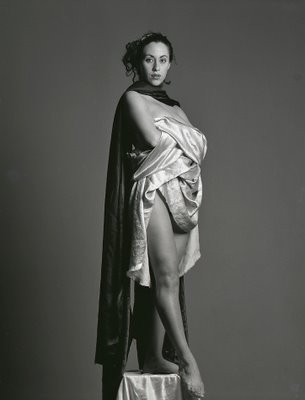
A few things conspired yesterday to bring on a terrible nostalgic melancholy.
A couple of days ago I finished the terrific novel Mr. Darwin's Shooter by Australian author Roger McDonald. I would have never read this book had circumtances not played out the way they did. I read the review in the NY Times when it appeared in 1998 but somehow I never saw it at a bookstore and I forgot. Last week when I took the B-line bus to teach my class at Focal Point (the bus stops at Sasamat and 10th Avenue) I did my usual routine of looking into the window of the used books store that alongside the stop. I have spent a fair amount of change there. Bookstores should never be at bus stops. In the window was Mr. Darwin's Shooter as a pristine first edition that had (by appearences) never been read.
It is a novelized account of the life of Symns Covington who was Charles Darwin's assistant during the trip in the HMS Beagle (1831-1836). Even after that trip when Covington settled in Australia he sent Darwin a large collection of barnacles which were to be as crucial as finches in helping Darwin arrive at his theory.
I was particularly attracted to the scenes where Darwin and Covington travel through the Argentine pampa. There are beautiful passages on how Covington loaded his bird gun so that birds would not be damaged by bullets. The finches, shot in the Galapagos were the most crucial in helping Darwin arrive at his startling conclusion on where we came from. One passage on gauchos caught my eye and started my melancholia:
The country people, the gauchos whose paths he crossed - and who gave him their hospitality at night - expressed their pride in never walking at all. They used their feet only in hobbling to their saddle beds, hopping to their fires of dry thistles for roasting meats and brewing their yerba mattee [author's spelling] teas. They used legs for jumping from thistle-clumps, cutting throats of Indians or each other as it pleased them. Covington's safety was up to their whims. He sensed their dangerous humours but left such decisions to God, and laughed in their faces. They were like cripples or were bred to be centaurs, you might think, living on horseback in their fresh-cut cowhide boots crusted with blood, with silver spurs and spaces leaving the first two toes dirty and bare. Such toes were made for gripping stirrups not dirt.
Then last night Hilary mentioned that every day she walks by 21st Avenue and Laurel and notices that the house where my Argentine friends Nora Patrich and Juan Manuel Sanchez lived for many years has been changed and remodelled. Hilary said, "It is as if they never existed." I got up and put on Mi Buenos Aires Querido which is my very favourite (up there with any Piazzolla) Argentine tango music CD and it has Daniel Barenboim on piano, Rodolfo Mederos on bandoneón and Héctor Console on bass. This CD is exquisite but extremely sad. After the music I opened up my copy of Darwin's The Voyage of the Beagle and spent some hours reading his entries on the Argentine and Uruguayan pampas. One of my favourite sections is when he writes of the birds of the pampas.
The teru-tero (Vanellus cayanus) is another bird, which often disturbs the stillness of the night. In appearance and habits it resembles in many respects our peewits; its wings, however, are armed with sharp spurs, like those on the legs of the common cock. As our peewit takes its name from the sound of its voice, so does the teru-tero. While riding over the grassy plains, on is constantly pursued by these birds which appear to hate mankind, and I am sure deserve to be hated for their never-ceasing, unvaried harsh screams. To the sportsman they are most annoying, by telling every other bird and animal of his approach: to the traveller in the country, they may possibly, as Molina says, do good, by warning him of the midnight robber. During the breeding season, they attempt, like our peewit, by feigning to be wounded, to draw away from their nests dogs and other enemies. The eggs of this bird ar esteemed a great delicacy.
On January 1953 I was 10 years old and my parents sent me to the camp (the English in Argentina call the campo or pampa the camp). One song was played to death that January and the only way to escape it was to hop on a horse and ride into the pampa where the only sounds where the rustling of the thistles and the tero-tero cries of Darwin's Vanellus cayanus which we Argentines adore and simply call the tero. That's the sound that it makes and when the bird flies low and swoops there is a sadness in its call whose memory of it brings in me a longing as powerful as that of the tango.
The song I was doing my best to avoid was the cloying:
How much is that doggie in the window?
The one with the waggly tail
How much is that doggie in the window?
I do hope that doggie's for sale
I must take a trip to California
And leave my poor sweetheart alone
If he has a dog, he won't be lonesome
And the doggie will have a good home
How much is that doggie in the window?
The one with the waggly tail
How much is that doggie in the window?
I do hope that doggie's for sale
I read in the papers there are robbers
With flashlights that shine in the dark
My love needs a doggie to protect him
And scare them away with one bark
How much is that doggie in the window?
The one with the waggly tail
Composed by Bob Merrill and sung by Patti Page.
During my horse travels I did not fall for the trick of a large tero with his espolones (I am sure that Darwin did not chose to reveal his knowledge in the above passage from the Voyage of the Beagle that only the male of the species has the sharp barbs on its wing shoulders). I found the nest and picked up one of the birds (it was small) and took him home with me to Buenos Aires. My tero grew and he romped in the front garden. We kept its wings clipped so it would not fly away. Anybody even approaching our front gate was alerted to us by my tero's "tero, tero". I had a guard bird! A year later, not long before we moved to Mexico my Uncle Tony brought us a very large brown poodle, Moro. It didn't take long before I found my terito with its wings broken. I was heart-broken and to this day I can vividly remember my tero's voice and how elegant and patrician he was.
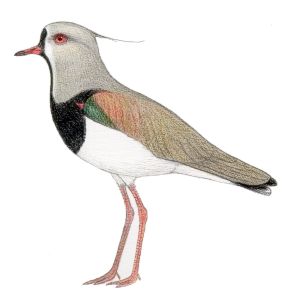
Linda Lorenzo that beautiful Argentine woman who faced my camera and on whose body I layered all my memories of Argentine nostalgia is seen here as a tero with her elegant bolts of black, white and silver satin.
The illustration by Santiago Claramunt, of the Tero is from This Book
The Great Sea - A Concert Of New Music & A Poet Smiles
Monday, November 17, 2008
It's dawn and things move about quickly,
a bird sound at the end of every sentence,
the period disolves and becomes a curve of notesRobin Blaser 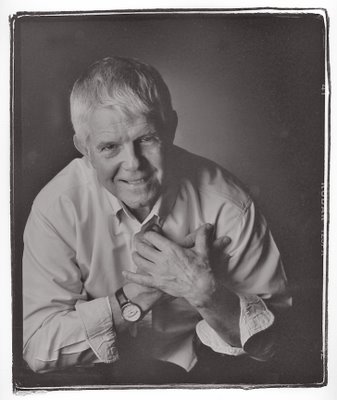 On election night Abraham Rogatnick and I went to a concert at St. Andrews-Wesley on Burrard and Nelson. The concert featured the Erato Ensemble and friends. This particular concert was dedicated to 7 British Columbia composers. All the music was brand new. The Erato Esemble is an interesting but ever so slightly odd musical group as they bring together voices, pianists and such instruments as the saxophone, the flute, the guitar, violin and the cello. This means that the group can play almost anything once it is adapted to their instrument makeup which varies depending on needs! The Erato Ensemble is not your usual chamber group. The concert began with a cello and piano piece by Timothy Corlis called Prelude, for the night of the lunar eclipse. Pianist Rachel Iwaasa and the interestingly named cellist Stefan Hintersteininger instantly wowed me to the outstanding acoustics of the church. But then I was front row aisle seat and the cellist was only a meter away. The next pieces were by composer Mark Armanini (below right with Vivian Xia). It must be nerve-racking to hear your music performed for the first time. Armanini was either trying to quit smoking or he was simply nervous as he chewed gum all night! His music blends a western sensibility with the music of China. During most of the performance of the 5-part Chinese Folksongs my eyes were on the hands of pipa player Guilian Liu. If there was ever an instrument (besides the harp) that is ballet of the hands the pipa has to be the other. Mezzo-soprano Grace Chan gave me an inkling (heard later in the composition of Leslie Uyeda) of her extraordinary presence and volume all wrapped around a most pleasant smile as if saying, “This is so easy.” I am sure it wasn’t. It srikes me that Armanini’s music and much of the music of the evening would be perfect for our Olympics. Armani then gave us some sweet songs with tenor William George and guitarist Michael Strutt. 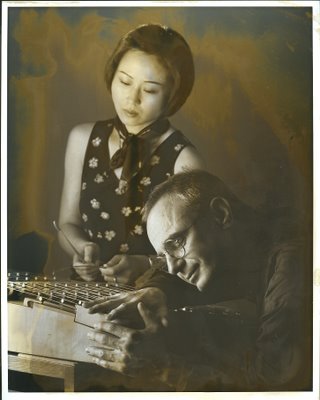 I am not a lover of the soprano saxophone buy Julia Nolan (and Rita Attrot on piano) somehow made Denis Bedard’s Fantasie sound smooth and mellow in the smooth and mellow parts. Colin Macdonald (of the Macdonald Pocket Orchestra fame) was there and he proudly said that Julia Nolan had taught him to play that soprano sax. Rodney Sharman was much more cheerful than usual as his two compositions, Cabaret Songs featuring tenor William George, baritone Joel Klein and pianist Rachel Iwaasa, were funny, especially Au Revoir, Maria Callas with text by Bill Richardson.  At the intermission my friend Abraham Rogatnick went to a victory celebration of the party of his choice and left me sitting next to poet Robin Blaser, a magnificent man with white hair whose profile is a Rushmore. Leslie Uyeda’s (below right with librettist Tom Cone) The Great Sea with words by a Netsilik Inuit woman Uvavnuk was a powerful blast by mezzo-soprano Grace Chan accompanied by Rachel Iwaasa.  When we listened to Russell Wallace’s Dreams poet Robin Blaser’s face instantly went into a smile as soprano Emily Cheung’s voice seemed to soar to the church rafters. He looked like a little boy on the last day of school. At that point and with Wallace’s next piece Qanimenskan Ku Tmicw (I have heard the earth) I believe the whole church was delighted with music that exceeded their expectations. The next piece, SunarcanuS (Act 2 with poetry by Roya Ravanbakhsh) was program music with a twist. Composer Farshid Samandari instead of chewing gum like Mark Armanini seriously transported himself into the percussion corner with instruments including an Arthur Rank type gong. Director Terry Pitt-Brooke had both hands going. He directed with his right while he flipped with his left a chart with numbers in 5 second intervals. It seems that this piece, a little duel between the left hand side and right hand side of the brain (with soprano Emily Cheung and mezzo-soprano Grace Chan and the full Erato Ensemble) had no predetermined tempo. This bit of avant garde music challenged me but did so gently. It was Lloyd Burritt’s (very top, left) Lake of Souls that finally made me smile at my lucky stars. Burrit explained that the text of his composition was from a poem he had been exposed to when he was 7. He pointed at the man (sitting next to me) as the poet. I looked at Blaser and asked him, “ If Burritt was 7 then how old are you now?” With a smile he answered, “ I am not prepared to tell you that at this time.” The whole piece with soprano Emily Cheung, mezzo-soprano Grace Chan, tenor, William George, baritone Joel Klein, flutist Tanya Klieforth, violinist Yuri Zaidenberg, saxophonist Julia Nolan and cellist Stefan Hintersteininger was, from my vantage point, a complete delight. The director’s right hand was mere inches from my face (that’s how close I was to the action) and on my right Robin Blaser, with a smile on his face seemed to be projecting on the singers the text of his poem for the first time. As it all ended I wondered at the tragedy of so much of contemporary new music. You hear it once and then… But Burritt told us that the concert had been recorded.
The Music Of My Imagination
Sunday, November 16, 2008
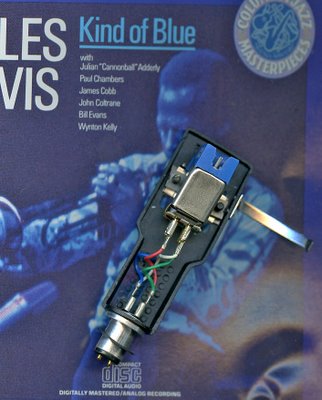
Much has been written about the impossibility of being able to read all the good books around in one lifetime. Something similar could be written about the time needed to listen to all of Bach's cantatas or Haydn's symphonies. When long-playing records were king, not all (very few) where competently manufactured. Music came with built-in pops. It was then that I learned to use my imagination and I could listen to the sound without the pops. When CDs came out the noises were gone. No matter how many people who told me that these CDs were diminished in warmth I didn't notice it much. I simply put in the warmth with my imagination. At age 66 I have discovered the ultimate sound system. It is the ultimate "green" sound system.
At my age I don't have all that much time to listen to world music or the latest revisionist punk bands. I am settled to liking the music I like. Every once in a while (I lie, much more frequently it is) I go to live baroque concerts where I listen to composers that never existed when A&B Sound was king of the mountain. These almost-long-lost baroque composers are wonderful. They have lived under the shadow of Vivaldi and Bach for too long. It is only recently that I have heard some of their music live and enjoyed the first or early symphonies of many composers like Beethoven. These first symphonies or first piano sonatas are rarely played. I even attended a performance of that odd (only the number is odd, but not in a mathematical sense) zero symphony by Bruckner!
What is that ultimate sound system? It is my memory. I can sit down with a decent cup of strong tea and play the whole Miles Davis album Kind of Blue in my head. It is free of pops and it is not compressed. The sound is all there. With my imagination I can re-live that magical moment that was the first time I heard Jazz Samba with Stan Getz and Charlie Byrd or the winter largo from Vivaldi's Four Seasons. I can imagine myself driving a Maserati Biturbo while the lights of Seattle pass quickly by as I pass through the partly covered city freeway while listening to London Calling.
There is one exception to this ultimate sound system and that is going to a concert of new music. I did this last night. I will write more about that tomorrow.
|






















